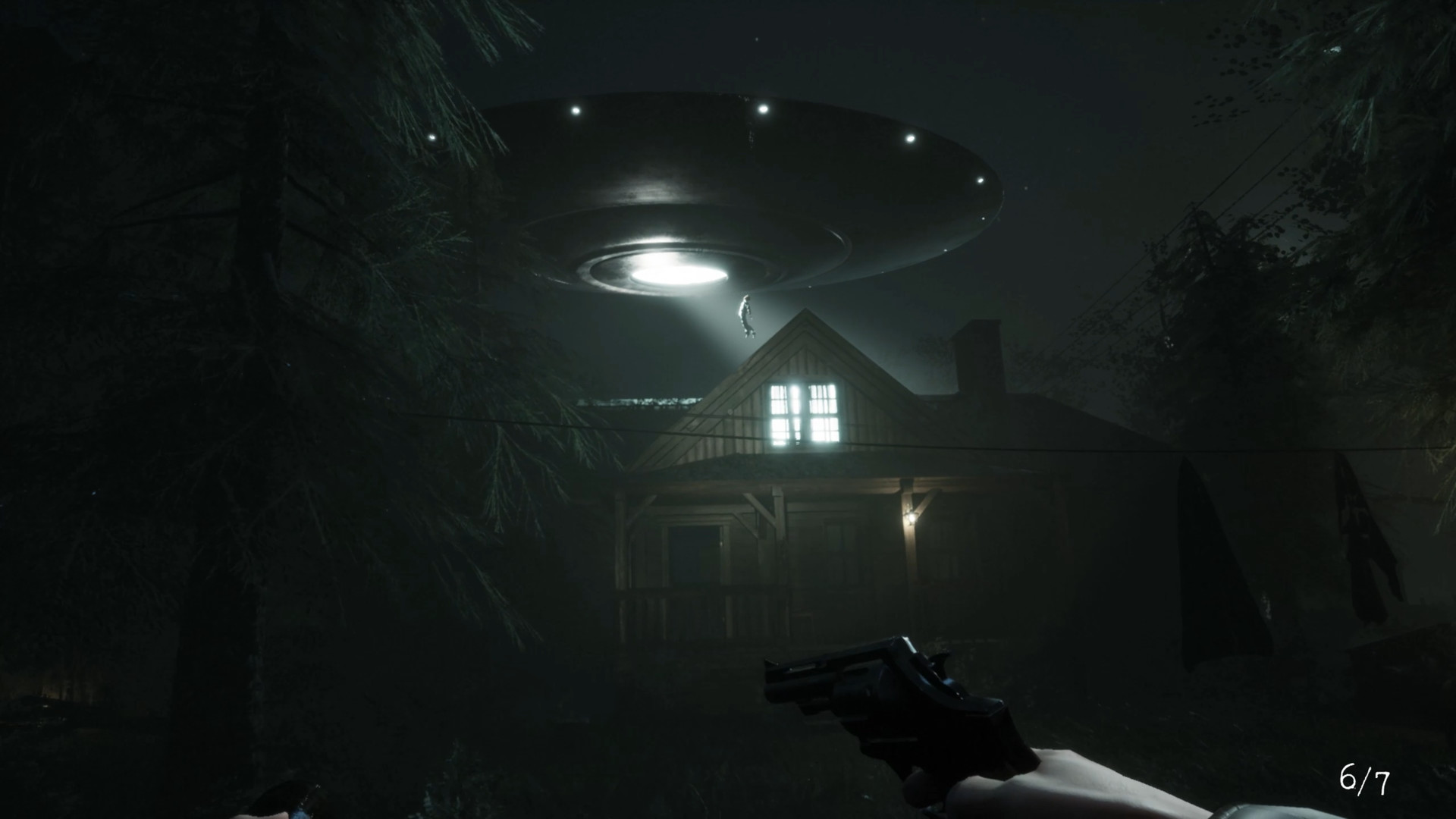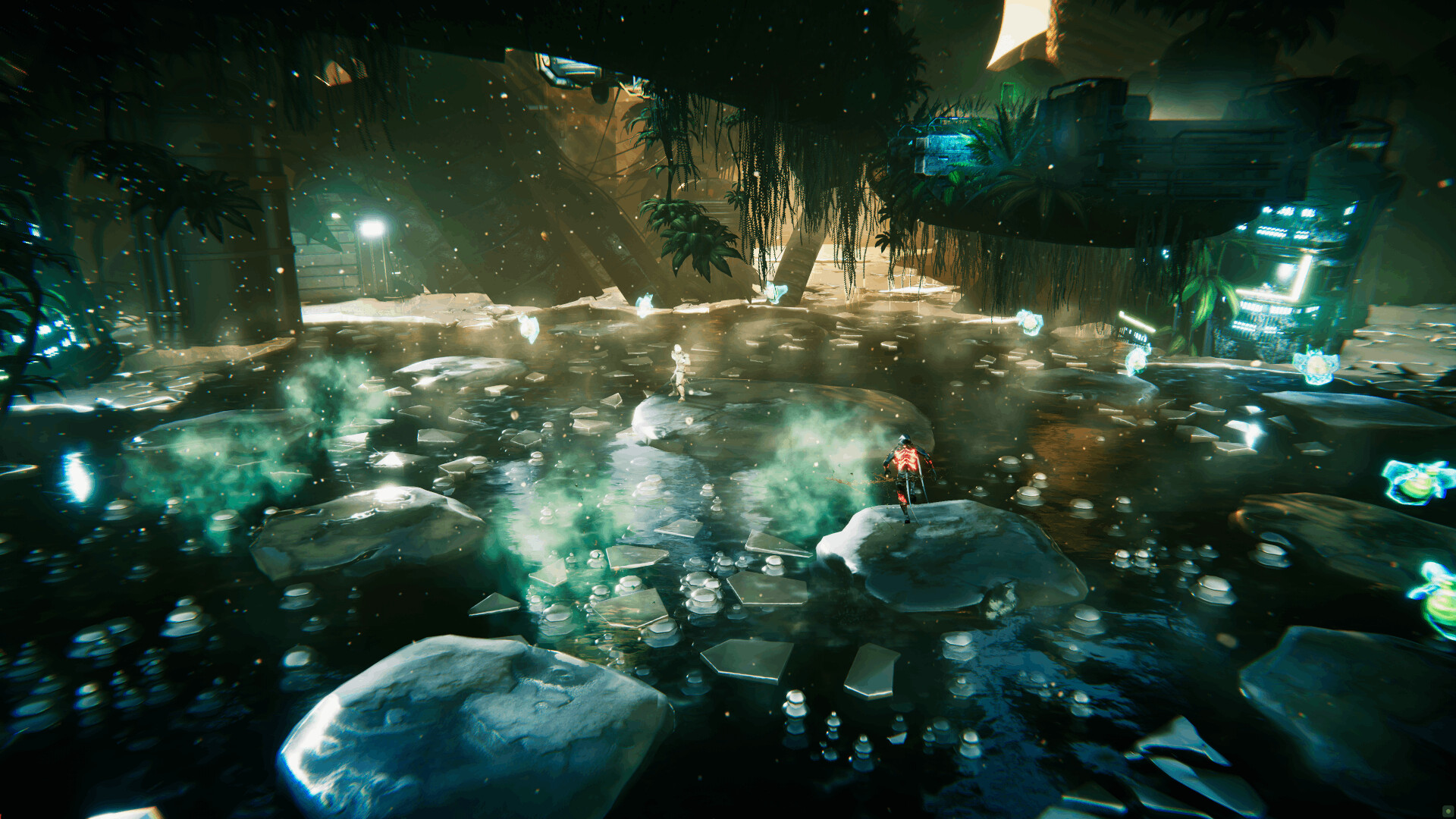This year has its fair share of exceptional games with engrossing narratives, but on the flipside, there are numerous stories so poorly executed it’s a wonder they made it through development. The endings discussed here are so underbaked, or so sudden, that it’s hard to care about what has happened when the credits roll.
NOTE: There are spoilers ahead for every game discussed in this feature.
Stray Souls
In Stray Souls you’ll take control of unremarkable teenager Daniel who moves into the dreary town of Aspen Falls after inheriting his recently deceased grandmother’s house. The prospect of a Silent Hill-alike was certainly enticing, but Stray Souls fluffs its lines by being a little too cookie-cutter. It certainly doesn’t nail the psychological trauma element it’s aiming for as Daniel’s actions and those of accompanying Martha can’t easily be explained. All this creepy stuff is happening, but they don’t seem phased at all. The spectre of Daniel’s grandma torments him, but why? Martha gives Daniel a gun, somehow? By the end, the lore is explained by a random note found in a police station. See, Daniel has ‘The Darkness’, with his grandmother’s haunting causing all the strange monsters to appear in Aspen Falls and the surrounding forest. Oh, and there’s a cult. It’s as inconsequential a backstory imaginable with zero context to explain the scary stuff happening despite its best efforts.
Wo Long: Fallen Dynasty
Soulslike Wo Long: Fallen Dynasty has a lot to like: it’s an inviting spin on FromSoftware’s blueprint with the challenge of certain encounters indicated to the player before engaging, saving them needless frustration, and a streamlined combat system forgoing the mental gymnastics required with Team Ninja’s other Soulslike Nioh. The story overall has merit too, telling a complex tale of multiple parties vying for control of an all-powerful magical elixir. It’s just that, the ending just… happens, with minimal challenge. The final three bosses are much easier than the side-quest boss Zhang Liao for instance, for once you’ve mastered deflecting his lightning-fast attacks, the remaining bosses are a walk in the park.
Call of Duty: Modern Warfare 3
Numerous complaints surround the brevity of Call of Duty’s Modern Warfare 3 and its controversial open combat missions. That said, the Modern Warfare 3’s villainous Vladimir Makarov hatches a plan to blow up the Channel Tunnel between England and France, with Task Force 141 fighting for their lives to defuse the bomb and eliminate the terrorists. Thing is, there’s no jeopardy; we know Task Force 141 will succeed – albeit, as it happens, at a cost – but perhaps others who’ve suggested Makarov should be victorious have a point. This resolution would set up a true cliff-hanger. As it happens, Task Force 141 learn of Makarov’s latest scheme and thwart it within minutes. Makarov could be portrayed as a major evildoer, but Modern Warfare 3 instead prefers to depict him as an easily beatable, cartoonish villain.
Daymare 1994: Sandcastle
The story-driven survival horror prequel to Daymare: 1998 features a host of deadly enemies, tense encounters, and niggling environmental puzzles. The plot itself however is a befuddling mess, poorly paced acted out by largely unlikeable characters. There’s no motivation established for the character’s actions; it’s a feeling of procession as player-character Dahlia Reyes delves deeper into the not-so-surprising underground secret base. And the ending, whereby Dahlia is telepathically persuaded by her sister Helen to inject herself with the final sample of Ogre blood to presumably survive teleportation is too ambiguous. Why would she do this? Is Helen speaking under the influence of the ogre? How is Reyes even hearing her in the first place?
Quantum Error

Developer TeamKill Media should be applauded for their ambition; attempting to meld first and third-person action, cosmic shooting, and horror, all through the lens of a firefighter can’t have been easy, but alas the results of Quantum Error make all their efforts somewhat misdirected. Front and centre is the game’s convoluted story, masterfully failing to make sense of its dimension hopping, planet spanning madness. The story is told through poorly directed cinematics to boot, with surprise cutscenes interjecting the gameplay. It tries to do too much, and by game’s end its impossible to make sense of the events that have transpired.
Amnesia: The Bunker
The Bunker is a smaller scale Amnesia experience, with an underdeveloped story to go with it. It’s possible Frictional opted to tell a story lighter on lore to fit the overall more refined experience, but the plot is guessable, full of red herrings and unnecessary distraction. The biggest diversion though is that player-character Henri’s amnesia doesn’t have any relevance at all. He didn’t forget, he was simply in unconscious when all the scary stuff started materialising. The ‘bad thing’ that he did was to cheat at poker to avoid partaking in a night-time patrol. An innocuous undertaking for the usually decent Henri; had he not cheated and gone on patrol himself, the events of the game – kickstarted by Lambert consuming the mysterious spring water – would likely have happened anyway.
Greyhill Incident

Owing to Greyhill Incident’s cliché story, underbaked characters, murky visuals, tepid gameplay, and extreme brevity, it’s premature ending might be its saving grace. The game’s only serviceable character Ryan is on a mission to save his son Henry from the clutches of the sinister greys, who for the game’s handful of hour runtime skulk nonchalantly through the rural farmland Ryan calls home. To save his son, he must be abducted. And… that’s it. We don’t see Ryan’s fate. Does he save Henry? Does he survive? Has his consciousness been transferred to his dog? Greyhill Incident’s climactic abruptness leaves too many pesky questions.
The Walking Dead: Destinies
It’s bad enough that The Walking Dead: Destinies has some of the most horrendous gameplay, stealth, writing, visuals, and cutscenes ever put into video game format. Yet somehow, for a game about your choices having an impact, it manages to have the same ending scenarios for Shane and Rick. The same attack on the prison with a tank (with Merle as the villain for Rick and the Governer for Shane). The same choice leads to either Glen or Michonne dying. Even the same fight in the circle of fire. The same bland evacuation from the prison, with either Shane or Rick leaving separately with Carl. It just comes down to which characters you’d like to see appearing in the same terrible ending rather than your choices having any meaning. At least Rick’s path has Carol 1v1ing a tank with an assault rifle, which is hilarious.
Flashback 2

This long-awaited sequel to the 16-bit classic has its fair share of problems. If you managed to get through to the end, well done you, as not only was there clunky combat, cliched atmosphere, lacklustre missions, and boring, blurry level design to lumber through, there was an unfathomable number of technical deficiencies which broke the game, meaning finishing it was an impossible endeavour anyway. Much like the original, protagonist Conrad is working to thwart an alien invasion, but the settings and story beats rarely deviate. It’s an execution so tepid that you’ll probably not even care what happens come the game’s end. Flashback 2 is a sequel we did not need.
Sonic Superstars
As with all 2D Sonic the Hedgehog games, story is told in between-level cutscenes. Except, in Sonic Superstars – the return to side-scrolling Sonic many long-term fans hoped would be a spiritual successor to Sonic Mania – even between-level cutscenes can’t explain all the crazy goings on in the Blue Blur’s latest adventure. Of the game’s multiple narratives, the Last Story is the most perplexing, with the release of a dragon, the origin of which is remarkably unclear. Eggman’s use of time manipulation is never explained either. A dumbfounding conclusion to an underwhelming Sonic game.